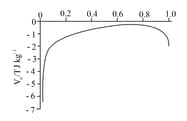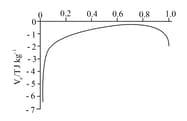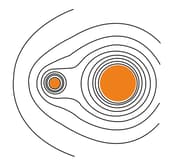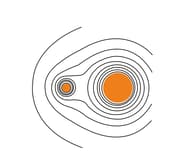The diagram shows the variation with distance from the centre of the planet of the gravitational potential due to the planet and its Moon. The planet's centre is at and the centre of the Moon is at . The units of separation are arbitrary. At the point where the gravitational field is zero.

Determine the ratio of the mass of the planet to that of the Moon.


Important Questions on Fields (HL)
The diagram shows the variation with distance from the centre of the planet of the gravitational potential due to the planet and its Moon. The planet's centre is at and the centre of the Moon is at . The units of separation are arbitrary. At the point where the gravitational field is zero.

With what speed must a probe be launched from the surface of the planet in order to arrive on the surface of the Moon
The diagram shows a planet orbiting the Sun counter-clockwise, at two positions- and . Also shown is the gravitational force acting on the planet at each position. By decomposing the force into components normal and tangential to the path (dotted lines), explain why it is only the tangential component that does work. Hence, explain why the planet will accelerate from to but will slow down from to .

The diagram shows the variation of the gravitational force with distance between two masses. What does the shaded area represent

The diagram shows equipotential surfaces due to two spherical masses.

Using the diagram, explain how it can be deduced that masses are unequal.
The diagram shows equipotential surfaces due to two spherical masses.

Copy the diagram and draw in the gravitational field lines due to two masses.
The diagram shows equipotential surfaces due to two spherical masses.

Explain why the equipotential surfaces are spherical very far from the two masses.
